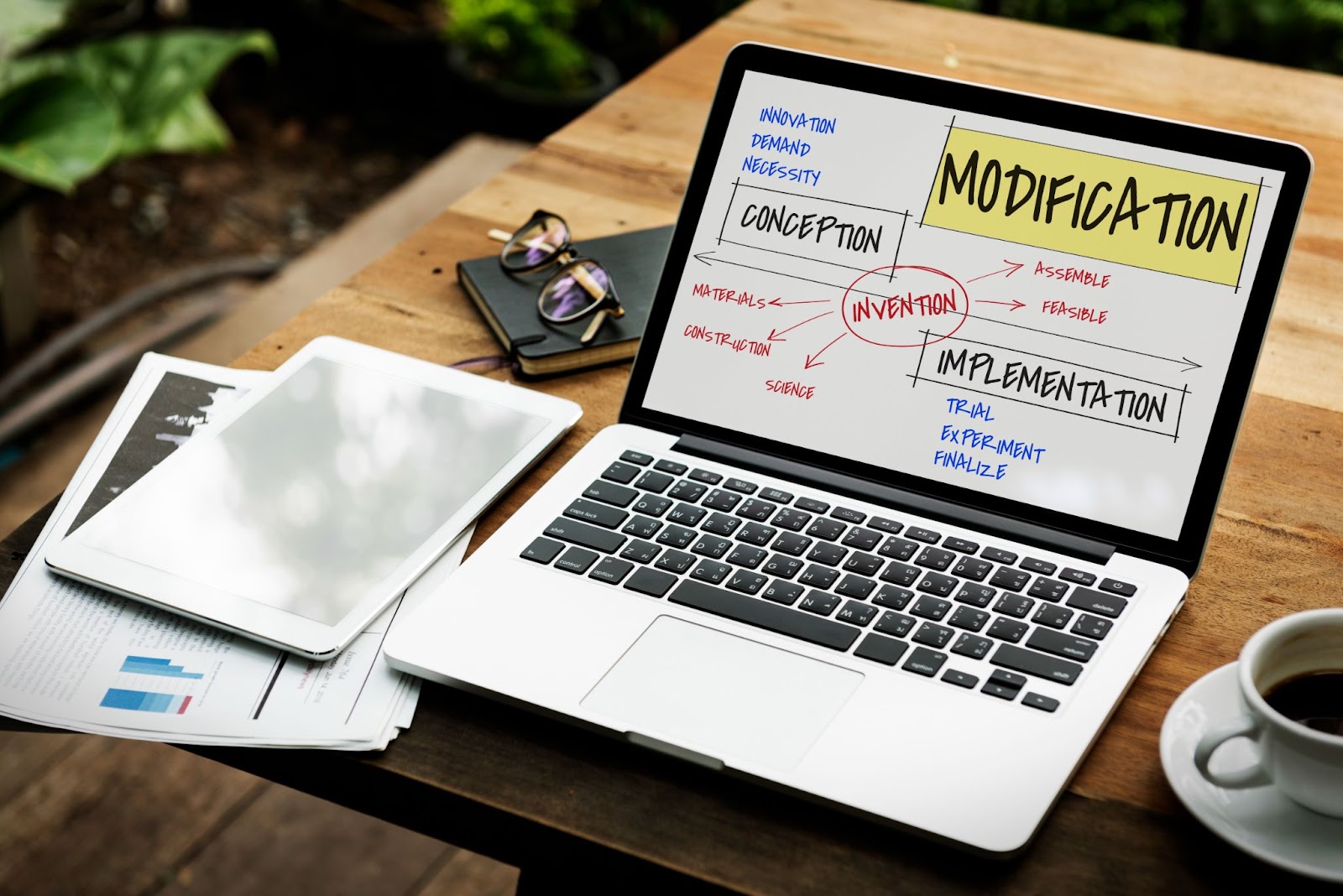Small and medium enterprises (SMEs) are the backbone of the global economy, creating close to 70% of jobs and GDP worldwide.
The best example of this is during the pandemic. While the big business crumbled, many SMEs spearheaded new innovations to help their community during the crisis and create more jobs.
Creativity and innovation are why SMEs will not stay “small” or “medium” forever.
They need an environment that allows them to grow once their innovations attract more and more demand. This includes having a system that is efficient to allow people to keep generating ideas and work more efficiently to keep up with the giant corporations.
This is the usefulness of ERP implementation for SMEs. It promotes growth by automating and integrating business processes, such as finance, HR, sales, and inventory. ERPs allow SMEs to access real-time data and insights to make good business decisions that cultivate business growth and promote efficiency - even with limited workers.
Signs that your SME needs an ERP system
You know your business is growing and you know eventually you’ll need an ERP system, but when do you know that your ERP needs an upgrade? It’s quite simple:
1. Standalone system and data capacity become inefficient
If you notice that your current software and data needs an upgrade to handle the increasing volume and complexity of your business transactions. Or experience slow performance, frequent crashes, data loss, or security breaches - these are signs that you need an ERP system that can scale up with your business growth.
2. Inefficient and manual processes across different departments
Entering the same data multiple times, reconciling data discrepancies, or dealing with human errors daily can be taxing. It’s inefficient and time-consuming. Especially if it makes your team do a lot of manual work and you have to do a lot of coordination between different departments. Those are the signs that you need an ERP system that helps automate your workflows and make sure the shared data remains accurate.
3. Lack of visibility and integration of business data and operations
If currently, your business can’t get a clear view of your business performance and operations, rely too much on incomplete reports, or have to switch between different systems to access the information you need - watch out. You may miss out on important trends, patterns, or opportunities to improve your business. Consider applying an ERP implementation for SMEs.
4. Difficulty in meeting customer demands and expectations
You need an ERP system that can enhance your customer relationship management and logistics. Suppose you are no longer able to meet your customer’s needs and preferences, start receiving negative feedback over logistics issues - or even start losing customers. In that case, it’s an indicator that you would need a system that could help you track and manage inventory levels, fulfill orders on time, and provide quality service. You could also consider implementing an ERP system for SMEs if you want to maximize your customer’s online shopping experience.
5. High operational and administrative costs
Most SMEs do not have the luxury of spending high costs in running and maintaining multiple systems for different business functions. Paying for hardware upgrades, software licenses, maintenance fees, training expenses, etc takes a toll on a growing company’s finances. If your small company spent too much money on these different techs just to keep track of all your business operations, you need to consider an upgrade to an all-inclusive ERP system tailored specifically for small businesses.
The best timing to implement an ERP system for your SME
The right time to implement an ERP system for an SME varies depending on the business - some may benefit from implementing an ERP system early on, while others may prefer to wait until they reach a certain level of growth or complexity.
Therefore, the decision to implement an ERP system should not be based on a one-size-fits-all answer, but on a careful analysis of the current and future state of the business, the expected benefits and costs of the ERP system, and the readiness and willingness of the organization to adopt the change.
Let us break down some best practices and tips for determining the optimal timing for your SME.
1. You have assessed your current and future business needs and objectives
Before conducting an ERP implementation for SMEs, you need to have a clear understanding of what your business goals and challenges are, and how an ERP system can help you achieve them.
You need to identify the pain points and gaps in your current processes, systems, and data, and the opportunities and benefits of improving them with an ERP system.
For example, if your SME wants to solve unsatisfactory inventory management issues like understocking or overstocking, you can utilize an ERP like Odoo and use its Inventory module to automatically spot inventory trends and forecast surges in demand.
2. Your company has prepared available resources and budget
Implementing an ERP for SMEs takes a significant investment of time, money, and human resources.
Try to evaluate how much you can afford to spend and save or earn from an ERP system in the long run. Don’t forget to assess the availability and readiness of your staff, infrastructure, and data for the ERP implementation project.
As an example, say you are a small manufacturer who wants to boost your business efficiency and profitability. With $10 million in annual revenue and 50 employees, you first analyzed your needs and objectives. Then, pick a solution that suits your industry and list what you need for your new system to achieve your business goals. Your calculation allows you to allocate $300,000 for the ERP system, and expected to save or earn $100,000 per year from the investment.
3. You have finished your research on different ERP solutions
When choosing an ERP solution, make sure to compare and contrast the different options and find the one that best suits your objectives and budget. Some factors to consider include scalability, flexibility, compatibility, security, and usability of the ERP solution.
Keep in mind that there are multiple types of Resource Planning software for SMEs, such as ERPNext or NetSuite Oracle. They all come with different features, functionalities, costs, and benefits. But if your business requires scalability and affordability, you should consider Odoo as one of your top choices.
4. Your company has mapped out the ERP implementation project
Implementing an ERP system for SMEs is complex and lengthy and involves multiple stages, tasks, and stakeholders.
It is important to plan and manage your ERP implementation project systematically, so that your project is completed on time, within budget, and with minimal disruption to your business operations.
Next, define the scope, timeline, milestones, roles, and responsibilities of the project, and monitor and control the progress and quality of the project.
One of the most common problems that can affect an implementation’s success is scope creep. When the project scope changes or expands beyond the original plan, naturally, the project will take longer to complete. As a result, you’ll spend more than planned. It will also potentially cause internal conflicts and dissatisfaction among stakeholders.
5. You have consulted experts and partners
Looking at the complexity of the process, implementing an ERP system is not a DIY project that you can do alone. It is better to seek professional help and guidance from experts and partners who have the knowledge, skills, and experience in ERP implementation. Consult with ERP vendors and make sure they can help you with the analysis, design, development, testing, training, and maintenance of your system.
Put special consideration into finding a team that can assist you in project management, custom development, custom localization (if applicable), server hosting, system infrastructure, data integration, and support.
Also, consider the partners’ skill levels and reputations. Higher-level partners usually have a complete team consisting of consultants, business analysts, trainers, and support staff. For example, a gold partner like Portcities has a reputation of becoming the one-stop IT solution provider that fully focuses on Odoo implementations and all related services.
Ready to decide on the best resource planning software for your SME?
Focus on what matters for your business: innovation.
Overcome your SME’s challenges in inefficient processes, high costs, and lack of scalability by streamlining and automating your business operations with Resource Planning software for SMEs. Pick an ERP software that enables integration and data analysis. Even better, find one that can improve your customer relationship, and most importantly - reduce your expenses.
Think of an ERP system for SMEs as an investment, not a luxury. With a clear objective and a great partner, an implementation can help you achieve your business goals and make your business processes more efficient and transparent.
If you are interested in implementing an ERP system for your business, you can always contact Portcities. Our experts can help you with the best ERP solution for your SME, and guide you through the entire implementation process.
